Истории успеха
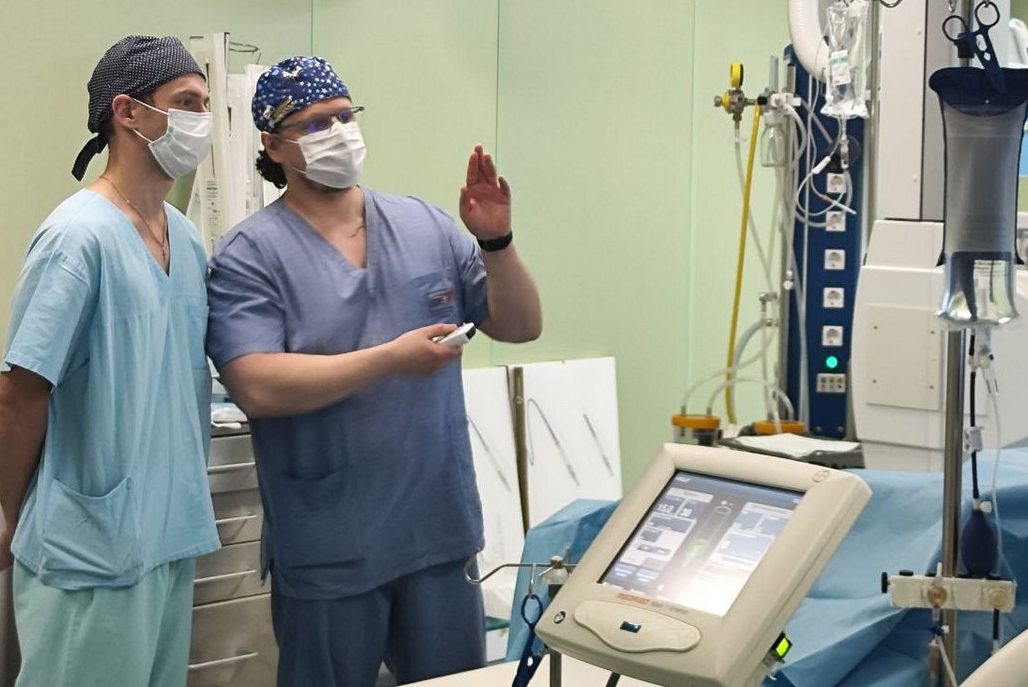
On April 2, the RNPC of Pediatric Surgery performed “transcatheter implantation of a South Korean-made nitinol self-expanding pulmonary artery valve PULSTA” to two girls. This is reported by the press service of the Ministry of Health.
Previously, young patients underwent stage-by-stage correction of such complex defects as Tetrad of Fallot, double discharge of the main vessels. On April 3, two more patients underwent surgery. In the near future, it is planned to operate on about ten more children.
To help pediatric cardiac surgeons and X-ray endovascular surgeons, the director of the Department of Congenital Heart Defects of the Center for Cardiovascular Surgery, Professor, Doctor of Medical Sciences Jay Yong Choi, was invited from South Korea to Belarus.
 For the first time in Belarus, thoracoscopic dissection of the aortic ring was performed in a patient with a congenital malformation — double aortic arch. A two-year-old baby was admitted with symptoms of compression of the trachea and esophagus. The usual method of surgical correction of the defect would be dissection of the non-dominant aortic arch using thoracotomy access. Its use increases the duration of hospitalization and leads to irreversible deformation of the chest.
For the first time in Belarus, thoracoscopic dissection of the aortic ring was performed in a patient with a congenital malformation — double aortic arch. A two-year-old baby was admitted with symptoms of compression of the trachea and esophagus. The usual method of surgical correction of the defect would be dissection of the non-dominant aortic arch using thoracotomy access. Its use increases the duration of hospitalization and leads to irreversible deformation of the chest.
Using 3D modeling, it was decided to perform a mini-invasive thoracoscopic correction of the defect. The optimal way of conducting an endoscopic suturing device through a centimeter incision was calculated, eliminating damage to adjacent vital structures.
The operation was successful. The baby attends kindergarten, there are no signs of compression of the trachea and esophagus.
Taken from the website www.belta.by
 According to Konstantin Drozdovsky, director of the Russian National Center for Pediatric Surgery, the boy Dima was on the waiting list for a heart transplant, but his condition deteriorated sharply. Unfortunately, with the diagnosis of dilated cardiomyopathy and with a weight of 17 kg, as well as other complications that the specialists of the center diagnosed in the baby, it was impossible to perform an operation to transplant a donor organ.
According to Konstantin Drozdovsky, director of the Russian National Center for Pediatric Surgery, the boy Dima was on the waiting list for a heart transplant, but his condition deteriorated sharply. Unfortunately, with the diagnosis of dilated cardiomyopathy and with a weight of 17 kg, as well as other complications that the specialists of the center diagnosed in the baby, it was impossible to perform an operation to transplant a donor organ.
The only chance left was the implantation of an artificial ventricle of the heart. Despite all the difficulties of surgical intervention, the postoperative period is calm.
Taken from the website www.minzdrav.gov.by
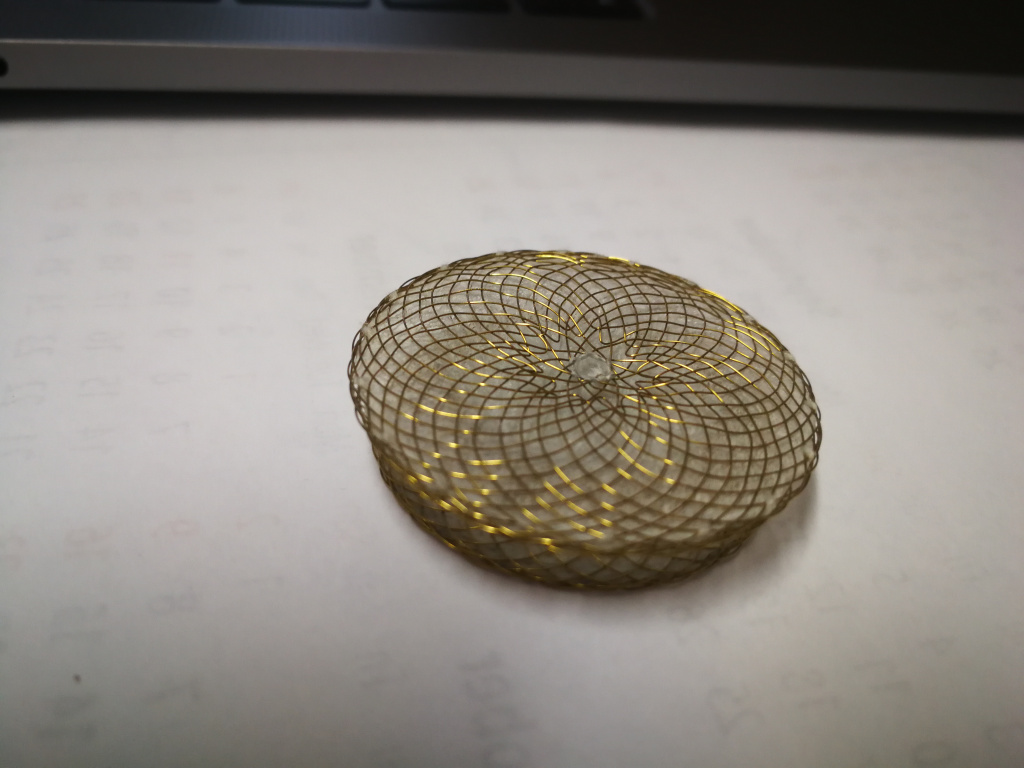
On December 18, for the first time in the CIS, a unique operation was performed at the RNPC of Pediatric Surgery to close an atrial septal defect under the control of an intracardiac ultrasound.
This story began a long time ago and now it can be called a pre-Christmas miracle! Eleven years ago, the wonderful Vsevolod was born, who, alas, had several malformations immediately at birth by Belarusian doctors. With the permission of parents and doctors, it can be said that esophageal atresia and atrial septal defect were detected.
Almost immediately after birth, the boy was operated on for the first time. He underwent plastic surgery – restoration of the esophagus. Subsequently, Vsevolod underwent a series of severe surgical interventions to restore the esophagus at various times.
Taken from the website www.minzdrav.gov.by
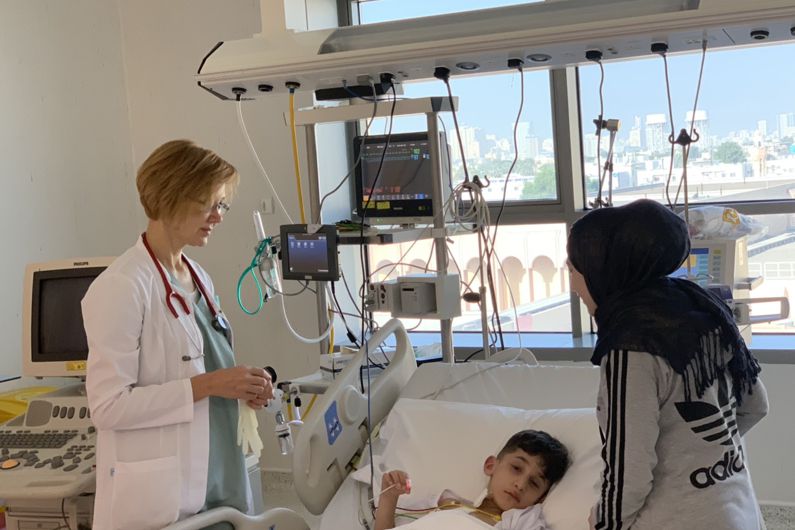
Several successful operations were performed by Belarusian pediatric cardiac surgeons in the UAE.
In January, specialists of the Russian National Center for Pediatric Surgery traveled to the UAE to conduct the first operations and master classes at the Al-Qassimi clinic. The Belarusian team consisted of 7 doctors and 6 nurses.
Cardiac surgeons performed 5 interventions. The first child our specialists operated on in the UAE was a seven-year-old boy with a congenital heart defect. He was diagnosed with a ventricular septal defect. And the smallest patient was a seven-month-old baby with a combined congenital heart defect.
According to Konstantin Drozdovsky, head of the delegation of specialists, director of the RNPC of Pediatric Surgery, chief freelance pediatric cardiac surgeon of the Ministry of Health, preparation for work in the UAE has been conducted for a year and a half. In the summer of 2017, the delegation of the Ministry of Health and Disease Prevention of the UAE, during negotiations in Minsk, asked for help in creating a pediatric surgery service in one of the country’s hospitals.
Taken from the website www.minzdrav.gov.by
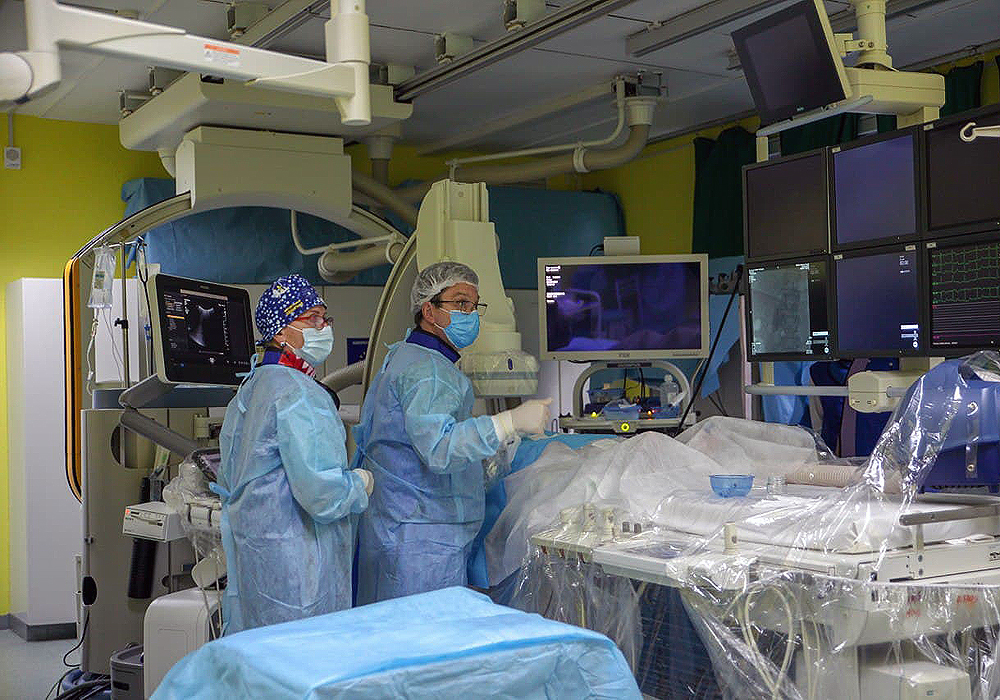
Belarusian pediatric cardiac surgeons have introduced a new operation for children with heart disease
Belarusian pediatric cardiac surgeons have introduced a new operation for children with heart disease
There is a new breakthrough in Belarusian pediatric cardiac surgery — our surgeons have introduced a new technique for operating on children with heart disease.
The essence of the operation: congenital heart disease is a very dangerous disease that literally makes our main organ work intermittently. To help children with this diagnosis, several stages of correction are needed. But in some patients, after a series of operations, a condition occurs that doctors call protein-losing enteropathy. With this problem, the lymphatic fluid, which contains a large amount of protein, flows into the intestinal area. As a result, children lose an important substance from the vascular system, and in order to somehow compensate for it, they drink a lot of hard-to-tolerate drugs.
Taken from the website www.minzdrav.gov.by
For the first time in the Republic of Belarus, specialists saved the life of a newborn baby with severe, life-threatening respiratory failure. Belarusian doctors managed to connect an extracorporeal membrane oxygenation (ECMO) device to a newborn (for the first time with meconial aspiration with respiratory failure) and thereby save her life.
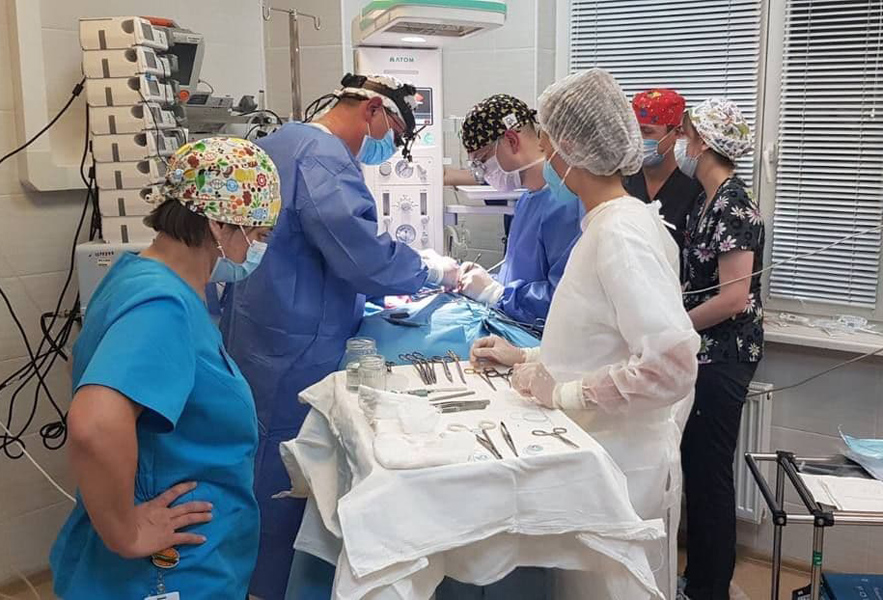
A unique case of saving the baby’s life occurred in Minsk. Doctors of the maternity hospital of the 6th hospital of the capital and the Russian National Center for Pediatric Surgery fought to save the life of a newborn. Timely connection of ECMO (an invasive extracorporeal method of oxygenating blood) allowed her to live and breathe.
According to experts, the child was born with severe respiratory failure, could not breathe on his own. The possibilities of artificial lung ventilation were exhausted. The baby was in imminent danger of death. A team from the Russian National Center for Pediatric Surgery urgently arrived at the hospital. After a consultation of experts, it was decided to connect her to ECMO for vital signs. It temporarily took over the functions of the lungs.
Taken from the website www.minzdrav.gov.by
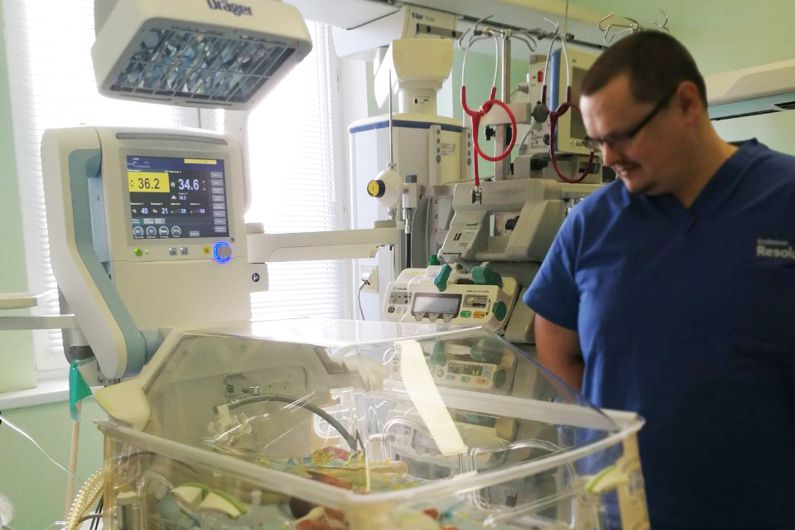 A team of Belarusian pediatric cardiac surgeons performed an operation to correct a congenital heart defect: pulmonary artery valve stenosis in a baby with a body weight of 1 kg 135 grams. This is a unique case in the history of pediatric cardiac surgery, said Konstantin Drozdovsky, Director of the RNPC of Pediatric Surgery, chief freelance pediatric cardiac surgeon of the Ministry of Health of Belarus. According to him, “according to our information, such complex operations have not yet been performed in the world for a baby with such a weight.”
A team of Belarusian pediatric cardiac surgeons performed an operation to correct a congenital heart defect: pulmonary artery valve stenosis in a baby with a body weight of 1 kg 135 grams. This is a unique case in the history of pediatric cardiac surgery, said Konstantin Drozdovsky, Director of the RNPC of Pediatric Surgery, chief freelance pediatric cardiac surgeon of the Ministry of Health of Belarus. According to him, “according to our information, such complex operations have not yet been performed in the world for a baby with such a weight.”The baby was born prematurely and, unfortunately, needed urgent medical attention.
“Here it is necessary to note the well-coordinated teamwork of the specialists of the RNPC “Mother and Child” and the DCC. The operation was successful, but it was preceded by serious preparatory work, first by neonatologists, and then by our cardiac surgeons, anesthesiologists and other specialists,” Konstantin Drozdovsky said.
Taken from the website www.minzdrav.gov.by

The RNPC of Pediatric Surgery operated on a one-and-a-half-month-old baby with appendicitis. This is the first recorded case of a child at such an early age in the last 50 years.
— Appendicitis as an independent pathology in children of the first months of life is an extremely rare phenomenon, — comments Alexander Svirsky, head of the Department of Pediatric surgery at the center. — There are less than a thousand such cases described in the world literature. Most often, the vermiform process becomes inflamed against the background of necrotic enterocolitis, intestinal malformations. According to statistics, these are usually destructive forms complicated by peritonitis.
Taken from the website www.МедВестник.by
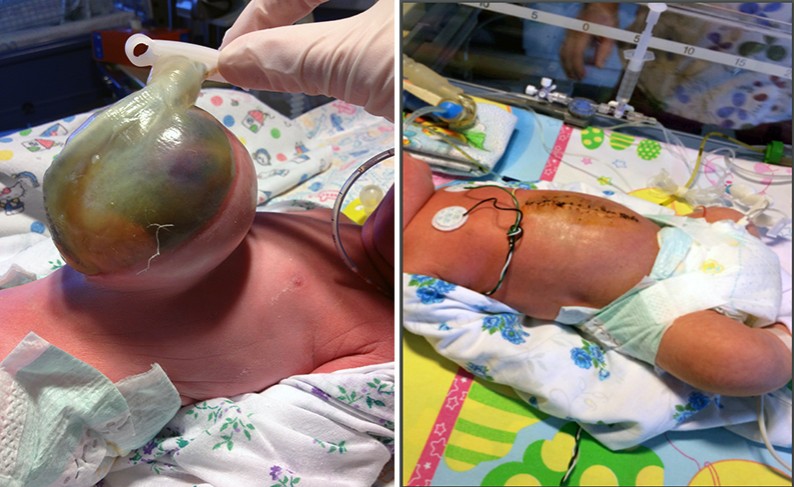 Specialists of the RNPC of Pediatric Surgery have improved the technique of eliminating large embryonic hernias (omphalocele) and performed 3 operations with its help.
Specialists of the RNPC of Pediatric Surgery have improved the technique of eliminating large embryonic hernias (omphalocele) and performed 3 operations with its help.
On average, 1-2 children with omphalocele are born in Belarus per year. The defect develops in the prenatal period: the anterior abdominal wall does not close, the intestines, part of the liver and other internal organs protrude from the abdominal cavity, the hernial sac is covered with embryonic membranes. The abdominal cavity of a newborn is very small. This is the whole difficulty of treatment: how to restore the correct anatomical structure of the cavity if there is not enough space? The intra—abdominal pressure will increase significantly – the internal organs will be compressed.
Taken from the website www.МедВестник.by
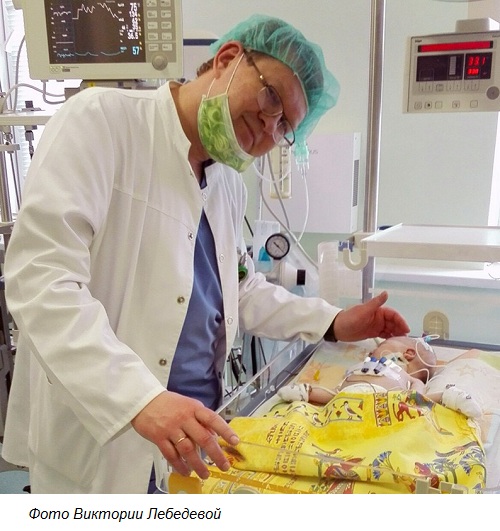
Samir recently turned one month old, but all this time he has been in the intensive care unit of the RNPC of Pediatric Surgery. Next to mom and dad, he is prevented from being by the most severe congenital malformation — hypoplasia syndrome of the left heart. Cardiac surgeons have only gone half the way: they performed two operations. There’s the same amount ahead.
The parents found out about the baby’s diagnosis at the 12th week of pregnancy. The specialists of the RNPC “Mother and Child” immediately joined in. Samir was born at the center, then the boy was immediately transferred to cardiac surgery. +
— With such a diagnosis, it is necessary to operate within the first month, because in fact the child has only half of the heart, — says Dmitry Leskovsky, head of the Department of Anesthesiology and intensive care, intensive care, extracorporeal circulation of the RNPC of Pediatric Surgery (pictured). — The boy was born weighing 2,500 g, and received supportive care before the start of surgical treatment.
Taken from the website www.МедВестник.by
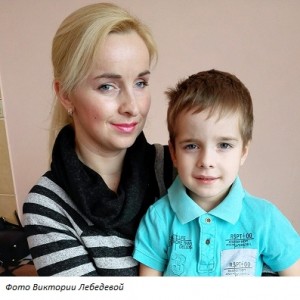
For smiling Maxim and his mother Elena, Valentine’s Day became a truly festive one: they were discharged from the RNPC of Pediatric Surgery. The child is cheerful and cheerful, as if he was not ill. Only the bandage and slight nausea remind of the operation.
A five-year-old boy will be remembered by doctors for a long time: such a patient happens only once in a lifetime. Correction of diaphragmatic hernia and abnormal vascular arterial network in the area of the left lung, esophageal orifice of the diaphragm, stomach, liver has become a real puzzle. Pediatricians and radiologists of the primary level began to solve the problem, surgeons finished it.
Taken from the website www.МедВестник.by
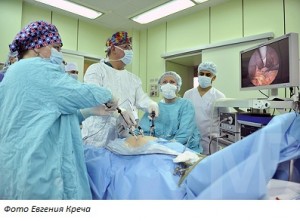
Specialists of the RNPC of Pediatric Surgery operated on a patient with a rare neuromuscular pathology of the esophagus – achalasia. The schoolgirl underwent laparoscopic esophagocardiomyotomy.
— Achalasia, in principle, is infrequent, especially in children: in our center we fix a similar diagnosis approximately once every 2 years. However, in 2015, 2 such patients were observed,” explained Alexander Makhlin, head of the operating team, Deputy director of the RNPC. — There is a spasm of the cardia, and, as a result, an obstruction develops. Swallowing disorders, an unpleasant sensation of a lump in the throat, nausea worsen over several years. The food is only semi—liquid, washed down with water.
Taken from the website www.МедВестник.by

A 13-year-old patient had a mitral valve prosthesis at the same time and a funnel-shaped deformity of the chest was eliminated.
A week after the intervention, Vika sees the first changes: there is no cosmetic defect anymore, it has become easier to breathe and move. The confidence of the girl and her parents is added by the support of the attending physician, cardiac surgeon Mikhail Shved (pictured), and all employees of the cardiac surgery department No. 2 of the Russian National Center for Pediatric Surgery. They have known the patient for more than 7 years.
Taken from the website www.МедВестник.by
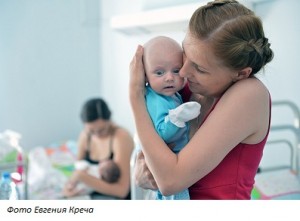
One and a half months old Ilyusha is finally at home. Mom can hardly hold back tears: “I can’t take a step away: I want to see him all the time, be near him.”
The child is welcome, long-awaited. The pregnancy was easy. Marina, a doctor herself, followed all the instructions of obstetricians and gynecologists, regularly went for an ultrasound. I learned the terrible news after giving birth in the intensive care unit (due to the weakness of labor, doctors had to urgently perform a cesarean section).
“Your son has a complex pathology: congenital diaphragmatic hernia, surgery is required.”
Taken from the website www.МедВестник.by

